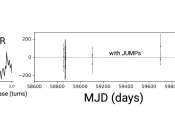ESA sets clock by distant spinning stars
ESA's technical centre in the Netherlands has begun running a pulsar-based clock. The "PulChron' system measures the passing of time using millisecond-frequency radio pulses from multiple fast-spinning neutron stars.








